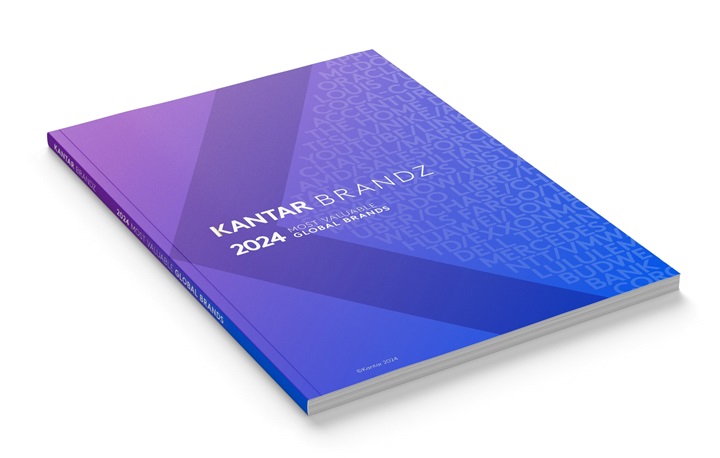The importance of building brands is a no-brainer for marketing and insights professionals. To those outside of our profession, however, brand building is too often seen simply as an extraneous cost, one of the first things to curb when the going gets tough. Brand building is seen as a long-term project that is hard to objectively measure, and as such is compared unfavourably with the short-term objective of direct sales uplift.
Nevertheless, we know that a brand is one of a company’s most valuable assets. In many cases, it is the most valuable one. Kantar BrandZ data shows, on average, that brand accounts for roughly 30% of business value. For the highest-performing brands, this proportion can rise to more than 50%.
Ultimately, Kantar BrandZ’s metric of ‘brand value’ depends on consumer perceptions, as well as a company’s ability to translate that brand equity into shareholder value. In that financial realm, we’ve seen how the Kantar BrandZ portfolio (based as it is on the world’s most valuable brands) has consistently outperformed the stock market, even amid the enormous disruptions caused by various macro-economic headwinds. Time and again, the market has proven that strong brands don’t just survive, they thrive.
Brands create value by justifying a higher price premium and by predisposing customers to choose the brand. Amongst competing methodologies, Kantar BrandZ’s brand valuation approach is the only one that builds on quantitative customer data to assess the isolated impact of the brand on the overall value it creates. This opens several opportunities for analysis and insights that go beyond identifying a business’s relative size. What’s offered instead is a quest to answer key questions.

Strategy
How do I drive brand value growth, and how do I measure the return generated by marketing investments?
In the process of valuing a brand, we also identify the related value of brand associations, that is, the dollar amounts linked to the various drivers of brand equity e.g. trust, or quality perceptions. This supports the prioritisation of strategic brand building directions based on real monetary value, which can be linked directly to brand investments. By comparing the most valuable areas of brand equity improvement with feasibility and the competitive context, we can build a long-term brand development roadmap with clear indications of expected value growth.
Using the same input, we can identify the incremental brand value that can be generated by marketing investment over time. Conducting scenario analysis on the assumptions in a valuation can be used as a dynamic tool to identify the return on investment of specific activities. Through our Meaningful Different and Salient (MDS) framework, we analyse brand equity data to understand the link between individual attributes and their eventual impact in driving brand value.
For example, we recently worked with an energy brand operating a large network of gas stations globally. They wanted to delineate the key levers that could drive financial growth for the global brand as a corporate asset. By looking at upstream and downstream operations by region, we pinpointed the key areas that could drive brand success and future growth across the globe. We then checked these potential value growth drivers against their required marketing investments, which naturally fed into a three-year brand development roadmap for the brand.

What is the ideal brand architecture for my portfolio?
As a company grows and acquires new brands, there will come a time when it must assess the most efficient way to manage its brand portfolio. Some brands will have significant, hard-to-replace value, while others could benefit from the added value and synergies of an umbrella brand. With the help of brand valuation analysis, we can assess the value impact of branding changes and highlight the key risk areas, to inform managerial decisions about brand portfolio optimisation.
To that end, we recently worked with a B2B packaging company that had acquired several brands over the years, resulting in a complex portfolio that the company’s own sales teams often struggled to understand. To drive both internal and external clarity, this client sought to develop a simpler brand architecture, without jeopardising the value that had been created historically. By assessing brand value, we could identify the company’s most important brand assets and separate them from brands that did not carry significant equity. Various migration strategies were put in place to transition brands underneath the more powerful umbrella brands, leading to an easy-to-understand portfolio.
Commercial
What is the value of my brand when licensed?
For many businesses, an important commercial objective is to expand the footprint of a brand, in other words, to make the brand accessible to more consumers across more markets. One way to do this is through franchising and licensing agreements. With robust analytic techniques, it is possible to explore the implications for licensing strategies (including royalty or franchisee rates) based on brand valuation. Our brand valuation approach helps brands arrive at proposed licensing rates by considering factors like margins, competition field analysis and our IP-protected Brand Contribution methodology.
What value does sponsorship create for my brand?
Another angle to licensing is understanding the value of sponsorship for a brand. To take a very timely example, sponsorship of key global sports events is often a hot topic, where understanding value creation becomes critical to make financial decisions. We have partnered with several brands to measure the equity and brand value impact that sponsorship brings for them, supporting decisions on the level of investment.

Internal
How do I align senior management KPIs?
Marketers work hard to build Meaningful and Different associations in consumers’ minds. It’s an outcome that is built on long-term, consistent work to improve brand perceptions. But, it’s also an achievement that sometimes goes underappreciated relative to the contributions of other business departments, for lack of clear KPIs. Kantar BrandZ offers a way to introduce strong KPIs into business’ success metrics, such as the ones charted below, thus making it easier for businesses to acknowledge and reward the extraordinary work that marketers put in.
How do I create a narrative towards investors about my brand’s value?
Brand value is a great way to attract the attention of those who have a direct say in the performance of a company’s stock: the investors. The investment community recognises the influence of brand on valuation, with brand being one of the top considerations to investors when evaluating a company’s prospects. Advertising the value of a brand in annual reports and in investor presentations not only discloses the strength of the brand to the financial world, it also accentuates the purpose and care a company’s management puts into its brands.




